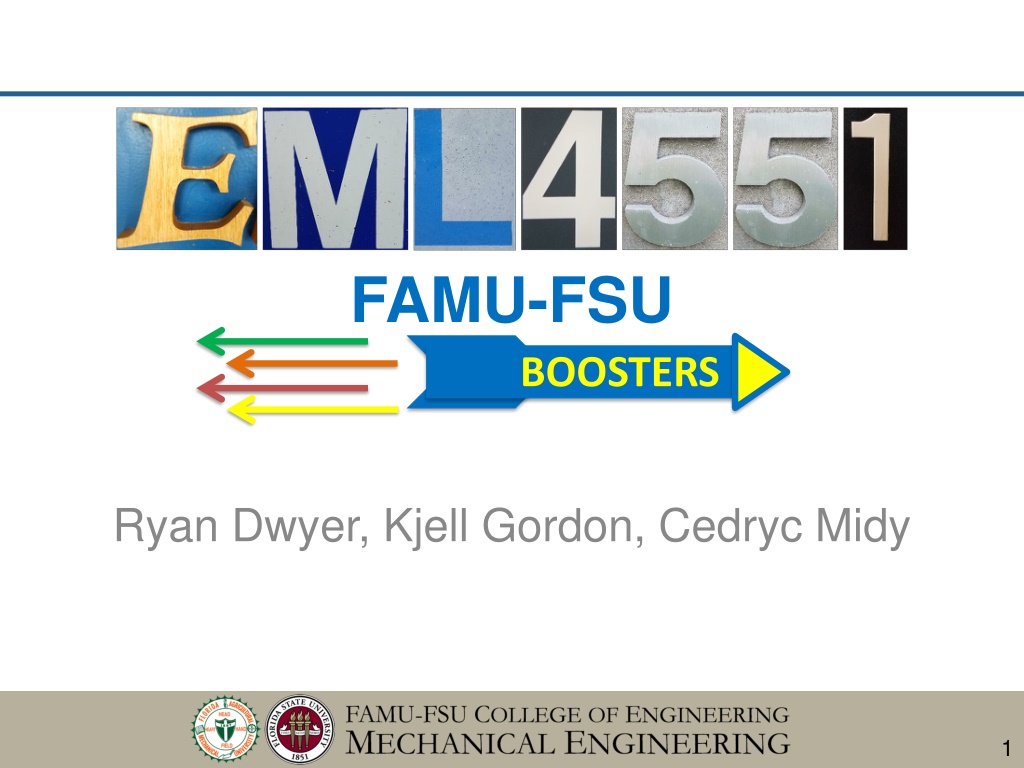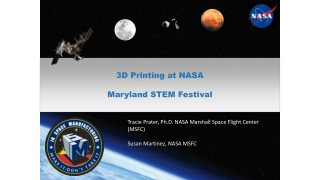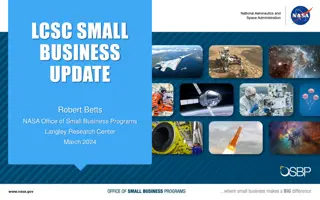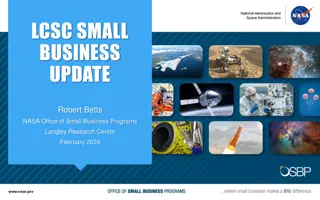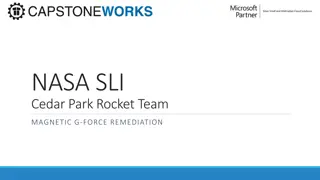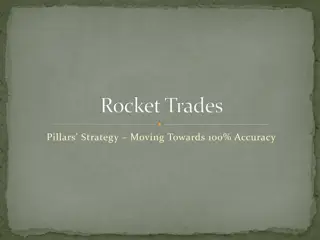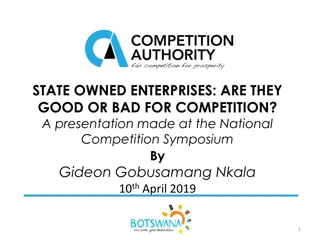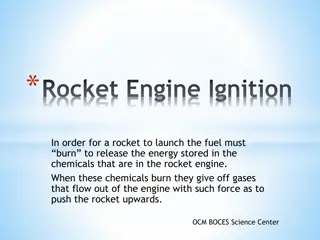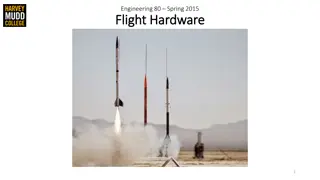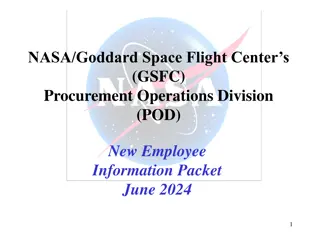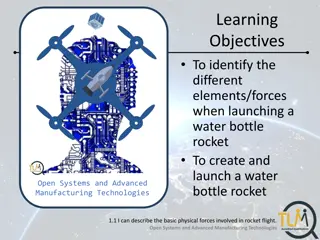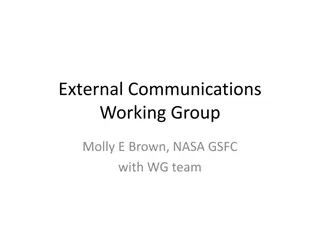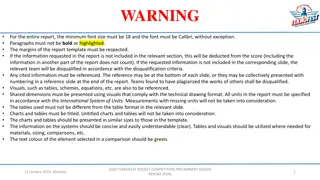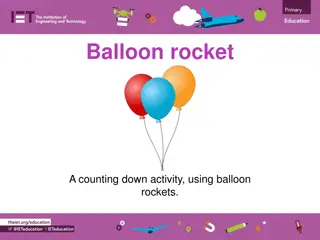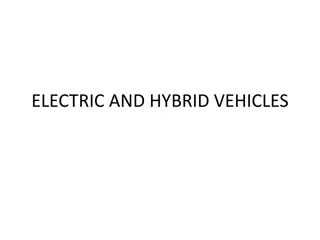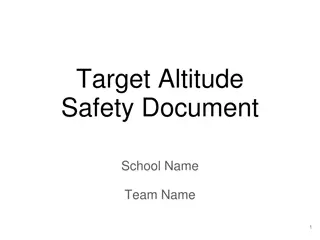Introduction to NASA Hybrid Rocket Competition
The NASA Hybrid Rocket Competition is sponsored by the NASA Florida Space Grant Consortium and NEFAR. Participants develop a hybrid rocket capable of reaching an altitude of two thousand feet. The rocket utilizes a combination of solid and liquid/gaseous fuels to generate thrust. Motor classifications and fuel examples are discussed as critical components in the competition.
Download Presentation

Please find below an Image/Link to download the presentation.
The content on the website is provided AS IS for your information and personal use only. It may not be sold, licensed, or shared on other websites without obtaining consent from the author. Download presentation by click this link. If you encounter any issues during the download, it is possible that the publisher has removed the file from their server.
E N D
Presentation Transcript
FAMU-FSU BOOSTERS Ryan Dwyer, Kjell Gordon, Cedryc Midy 1
Introduction Ryan Dwyer Kjell Gordon Chris Bredberg Cedryc Midy James Beattie 2
Introduction NASA Hybrid Motor Rocket Competition Sponsored by the NASA Florida Space Grant Consortium (FSGC) and the North East Florida Association of Rocketry (NEFAR) Develop a hybrid rocket capable of reaching an altitude of two thousand feet from launch. Supporting Faculty: Dr. Chiang Shih and Dr. Kourosh Shoele 3
Background Types of Fuels A hybrid rocket is one that provides lift from a motor of two different types of fuels, solid and liquid or gaseous The reaction between the solid grain fuel and the liquid oxidizer is what produces a reaction to come out of a nozzle to produce thrust, as seen in Figure 1. Figure 1- Example of a Hybrid Rocket Booster 4
Background Fuel Examples Liquid/gaseous Fuel Types Liquid oxygen (LOX), Nitrous Oxide(N2O), Dinitrogen Tetroxide(N2O4) Solid Grain Fuel Types HTPB(hydroxyl-terminated polybutadiene), Hydrocarbon composed of Plexiglass and Magnesium 5
Background Motor Rocket Motors are designated by class, determined by the amount of impulse a motor can deliver The Hybrid Rocket Competition requires a G- class or lower motor which is equivalent to an impulse of 0-160 N*s Anything above a G-class motor is no longer considered a model rocket by the National Rocket Association, but is known as a high powered rocket motor 6
Background Motor Most motors are designated with a Letter classification followed by two numbers (e.g. C5-0) The letter classification is based on the total impulse limit 7
Background Motor The first number a classification based on average thrust A high number, 10, would be a higher average thrust over a smaller time whereas a 1 would be the weakest average thrust over a larger time period The second classification number, precursed by a hyphen is related to the time delay from when the motor burns out and a recovery system is deployed The delay time is related to the weight of the rocket The average time delay can generally range anywhere from 0-10 seconds depending on the weight of the rocket 8
Background Sensors Altitude of rocket is determined with an altimeter Altimeter measures pressure versus reference pressure Traditionally, atmospheric pressure compresses wafers and is translated to rotation 9
Background Sensors Electronic altimeter data will be logged Electronic altimeter Board - Arduino, BeagleBone, Dragonboard Power source - 9 Volt 10
Background Rocket Body Components and Uses Nose Cone Aerodynamics and storage Recovery System - Parachute Fins Stability Body Aerodynamics, storage and structure Payload - Electronics Propulsion System Propellant storage and combustion Nozzle Provides thrust Diverging and converging geometry 11
Background Aerodynamic forces Weight Thrust Drag Lift Center of Gravity (COG) -Point where forces due to gravity are assumed to act Center of Pressure (COP) - Point where sum of forces due to pressure are assumed to 12
Background Aerodynamic forces Lift Generated from velocity difference of the rocket and the surrounding fluid Acts perpendicular to the drag force towards the vertical axis Weight Due to gravitational acceleration Acts downward to the Earth Drag Caused by friction between the rocket s body and the surrounding fluid Acts in the opposite direction of the motion Thrust Provides force to accelerate and launch rocket Opposes weight of the rocket 13
Background Performance A high performance rocket is stable Yaw and pitch motions results in an unstable rocket due to wind 14
Background To Ensure Stability COP located below the COG for stability Rocket aligns with the direction vector drawn from COP to COG Increase distance from COP to COG Increasing the number or size of fins Raise COG toward the nose cone by adding weight to the top of the rocket Induce a rolled spin on the rocket Reduces the effects of wind attempting to create instability 15
Background Recovery system & Safety Safety is a top priority Safety of people Safety of rocket reusability Materials: Lightweight - easy recovery Temperature resistant - withstands high temperatures Strong - Endure aerodynamic forces during launch, flight and landing 16
Background Recovery system & Safety Material Examples: Paper Wood Plastics Fiberglass 17
Project Scope Key Goals 1. Build and test a prototype of rocket. 2. Finalize design for competition. 3. Achieve altitude of as close to two thousand feet as possible. 4. Win the NASA Hybrid Rocket Competition. 5. Lay the groundwork for future aerospace competitions for the FAMU-FSU COE. 18
Project Scope Assumptions Fuel sources/motor are able to be housed by FAMU-FSU COE. FMEA and Hazard Analysis meets FSGC standards to gain access to competition. Engineering Notebook for the competition is accepted to by FSGC to be allowed to compete. 19
Project Scope Primary Markets Aerospace Industry Corporations such as NASA, SpaceX, Lockheed Martin, Boeing, Northrup Grumman, etc. Secondary Markets Rocket related educational and hobby groups such as AIAA, high schools and other universities participating in rocketry projects. 20
Project Scope Stakeholders Investors Decision Makers AdvisersReceivers NASA Yes Yes No Yes Florida Space Grant Consortium (FSGC) Yes Yes No Yes North East Florida Association of Rocketry (NEFAR) No No No Yes Dr. Chiang Shih No Yes Yes Yes Dr. Kourosh Shoele No Yes Yes Yes Dr. Shayne McConomy No Yes Yes Yes FAMU-FSU College of Engineering Yes Yes Yes Yes FAMU-FSU AIAA. No No No Yes 21
Customer Needs Project Needs The specifications provided for the hybrid motor rocket competition are very concise and make up the following guidelines for this project: Rocket purposed to reach apex of 2,000 feet Will utilize a hybrid motor rated G or from a lower class Rocket will be fired from a distance of 300 feet from launch rails/pad A recording barometric altimeter will record altitude data for the competition. 22
Customer Needs Deliverable Needs While these are not strictly needs pertaining to the functionality of the product, they are still required by the sponsor. A Failure Modes & Effects Analysis (FMEA) report will be submitted by November 17, 2017 23
Customer Needs Deliverable Needs Three to four page report will be submitted every two weeks detailing the progress of the team detailing the progress and achievements of the team Engineering analysis book to be submitted two weeks prior to competition Includes engineering data, calculations, drawings and sketches, test results, notes, ideas, meeting notes, etc 24
Functional Decomposition Body Protect other Subsystems from harm Store other Subsystems Ensure stability during flight Motor Provide thrust to allow rocket to gain altitude Use solid fuel grain with liquid or gas oxidizer as fuel sources (Hybrid motor) 25
Functional Decomposition Launch System Rail system to point the rocket within 30 degrees of straight up Have a backup safety switch to prevent accidental ignition Capable of being launched from 300 ft away 26
Functional Decomposition Electronics Read from Altimeter Store Data Activate Recovery System Recovery System Decelerate the body/motor to a safe speed before landing 27
Conclusion Up Next Targets Concept Generation Design Budget 28
References http://www.kr4.us/MPL3115A2-Altitude-Pressure-Sensor- Breakout.html?gclid=CjwKCAjwjozPBRAqEiwA6xTOYKScBHpKJ5QYVaHAxWu d2lBCFVYp_IELqOV3GwwB1-r0n9QZra2-rBoC8DUQAvD_BwE http://www.explainthatstuff.com/how-altimeters-work.html https://www.youtube.com/watch?v=ftyAAH35tzQ https://www.youtube.com/watch?v=OiVCX04YJMY http://www.rocketryforum.com/link.php?u=http://www.teachengineering.org/view _lesson.php?url=collection/cub_/lessons/cub_rockets/cub_rockets_lesson03.xm l&thread=64407&postid=691700 https://www.nasa.gov/multimedia/imagegallery/image_feature_2333.html http://modelrocketbuilding.blogspot.com/2010/11/parachute-attachment- tip_28.html http://www.asp-rocketry.com/ecommerce/Model-Rocket-Parts-Building- Materials.cfm?cat_id=7 http://www.ewp.rpi.edu/hartford/~ernesto/S2013/EP/MaterialsforStudents/Lee/S utton-Biblarz-Rocket_Propulsion_Elements.pdf 29
